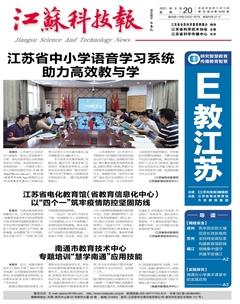AI in Education: Change at the Speed of Learning(Ⅱ)译题 《教育中的人工智能:学习速度的变化》(二)
Product by UNESCO IITE (The UNESCO Institute for Information Technologies in Education)联合国教科文组织教育信息技术研究所
该报告为UNESCO IITE新推出的“教育的数字化转型”(Digital Transformation of Education)系列出版物的第一期。据悉,“教育的数字化转型”系列將包括政策简报、分析报告和反思论文,以探讨由于技术的使用及其对教育和人类生活其他领域的影响,教育领域正在发生和正在出现的根本性变化。
1.The Changing Role of Technology in Education
Students and teachers are facing a world of constant, ever-accelerating change. The disparity between the developed and developing world in terms of access to the internet and smart devices was immediately recognised as a ‘Digital Divide; and as technology entered the classroom in schools where the socio-economic conditions allowed for such investments, fears were expressed that disadvantaged students of all nationalities would be left behind.
Conversely, many people held that access to technology and low-cost mobile devices could help close the educational gap caused by failures of the formal education system, and connect those who had left school or never had the opportunity to attend a classroom to rich educational experiences which could address foundational issues such as the global challenge of illiteracy.
In the event, the introduction of devices into the classroom did not bring about a commensurate improvement in exam grades — though it did help to enable new pedagogical modalities such as the flipped classroom — and illiteracy rates remained virtually unchanged. The role of the teacher has been proven paramount, along with the need for adequate professional development supports which incorporate the building of digital skills. Far from technology replacing teachers, the role of the teacher is now recognised as the most important factor in unlocking the potential of technology to advance teaching and learning.
In concert with the emergence of these new technologies was a focus upon what were termed ‘21st century skills. Knowledge-acquisition was relegated in importance, and the ability to work in teams, to collaborate and communicate effectively and to develop analytical and digital skills to better prepare students for the world they would face upon leaving school assumed a primacy in curricular and pedagogical design. Learning how to learn and the importance of lifelong learning were regarded as intrinsically linked to the acquisition of digital skills and experience in the use of basic technologies.
2.Advancements in Technology
2.1 Data, Analytics and Personalized Learning
The promise of technology lays in its ability to support personalised learning pathways: but this could not be achieved through the use of hardware or software alone. To determine whether students were building 21st century skills it would be necessary to measure a variety of data, drawn from disparate sources. The implementation of Student Information Systems and Learning Management Systems provided new digital data sets, but the majority of data pertinent to student progress and performance was still in paper form, and often resided solely in the heads of teachers. Before Artificial Intelligence or Predictive Analytics could be employed to assist in the creation of personalized learning pathways, progress was necessary in how data was gathered, stored, and made accessible.
2.2 Artificial Intelligence
Artificial Intelligence begins with data. The ability to ingest data from multiple data sources, interrogate that data and derive insights — using tools such as predictive analytics and machine learning — is what makes AI such an exciting advancement in education technology. In an educational context, perhaps the best way to view Artificial Intelligence is to view it as Augmented Intelligence. The application of AI provides all stakeholders with additional information and with insights which can better inform decisions.
2.3 Cloud Computing
Perhaps the single most important development in the evolution of Artificial Intelligence has been the shift from what is termed ‘on-premises computing to Cloud Computing, where users access computing resources through the internet, with a virtually unlimited source of computing power that can increase in line with their needs. These resources include tools and applications like data storage, servers, databases, networking, and software. As long as an electronic device has access to the internet, it has access to the data and the software programs to run it.
2.4 Machine Learning
Machine Learning is an application of Artificial Intelligence which enables computers to act without being explicitly programmed, and to learn and improve from experience without human intervention or assistance. It is used to answer questions that cannot be answered by manual research, and is based on the idea that systems can learn to identify patterns and make decisions and can become more proficient over time, learning from previous computations to produce reliable, repeatable decisions and results.
译文
1.技术在教育中不断变化的作用
学生和教师正面临着一个不断加速变化的世界。发达国家和发展中国家在互联网和智能设备接入方面的差距被视为“数字鸿沟”;而社会经济条件允许进行此类投资的学校毕竟有限,随着技术进入课堂,人们担心其他弱势学校的学生会被抛在后面。
相反,许多人认为使用技术和低成本的移动设备可以帮助縮小因正规教育系统失衡而造成的教育差距,让那些已经离开学校或从未有机会进入课堂的人获得丰富的教育体验,这可以解决一些基本问题,譬如降低全球文盲率这一艰巨任务。
到头来,将设备引入课堂并没有引起成绩的相应提高——尽管它确实有助于启用新的教学模式,例如翻转课堂——而且文盲率几乎保持不变。事实证明,课堂上教师的作用至关重要,同时教师需要足够的专业发展支持,其中包括数字技能的培养。技术远不能取代教师,教师的角色现在被认为是挖掘技术促进教学潜力的最重要因素。
随着新技术的出现,人们开始关注所谓的“21世纪技能”。知识获取的重要性降低,团队合作、有效合作和沟通以及发展分析和数字技能在课程和教学设计中占据首要地位,为学生在离校后更好地面对世界做好准备。学会学习和终身学习的重要性,被视为与获得使用基本技术中的数字技能和经验有着内在联系。
2.前沿技术
2.1数据分析和个性化学习
技术的前景在于它能支持个性化的学习途径,但这不能仅仅通过使用硬件或软件来实现。为了确定学生是否在培养21世纪技能,有必要测量从不同渠道获得的各种数据。学生信息系统和学习管理系统的实施提供了新的数字数据集,但与学生进步和表现有关的大多数据仍然是纸面形式,而且往往完全由教师负责。在使用人工智能或预测分析来帮助创建个性化学习路径之前,必须在数据的收集、存储和访问方面取得进展。
2.2人工智能
人工智能始于数据。利用预测分析和机器学习等工具从多个数据源获取数据、查询数据并得出见解的能力,是人工智能在教育技术方面取得如此令人兴奋进步的原因。在教育背景下,也许看待人工智能最好的方法就是将其视为增强智能。人工智能的应用为所有利益相关者提供了额外的信息和见解,这些信息和见解可以更好地为决策提供信息。
2.3云计算
可能人工智能发展最重要的方向,就是从所谓的本地计算向云计算转变,用户通过互联网访问计算资源,拥有可以根据需要增加的几乎无限的计算能力。这些资源包括诸如数据存储、服务器、数据库、网络和软件等工具和应用程序。只要电子设备能够访问互联网,它就可以通过访问数据和软件程序来运行。
2.4机器学习
机器学习是人工智能的一种应用,它使计算机能够在没有明确编程的情况下自行操作,并在没有人为干预或帮助的情况下从经验中学习、改进。它用于回答人工研究无法回答的问题,并且基于这样一种理念——系统可以学习识别模式和做出决策,而且能从以前的计算中学习,并随着时间的推移变得更加精通,从而产生可靠的、可重复的决策和结果。

